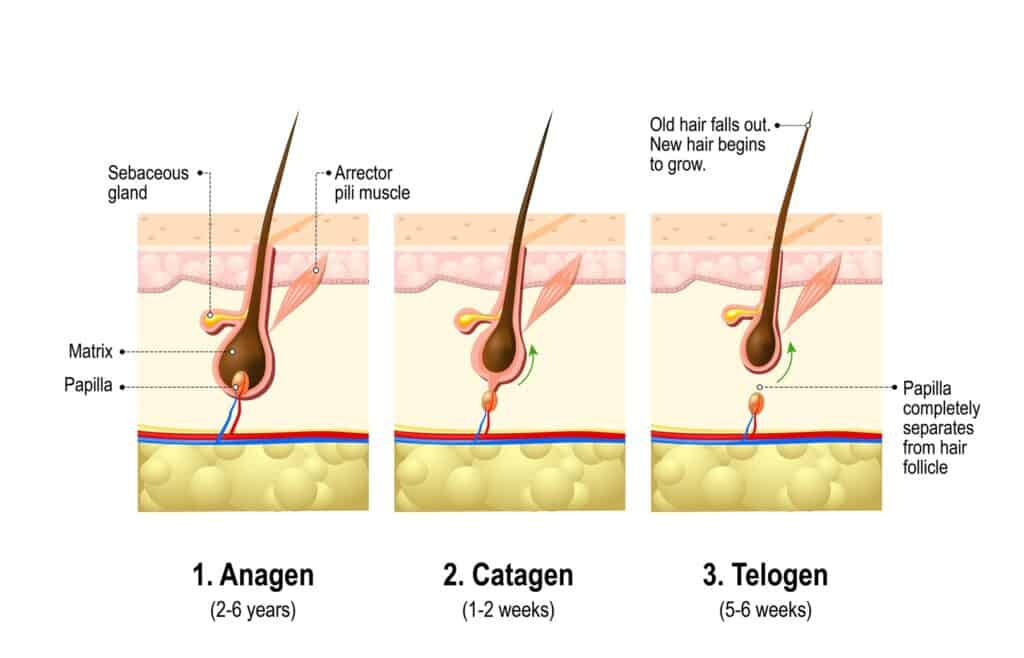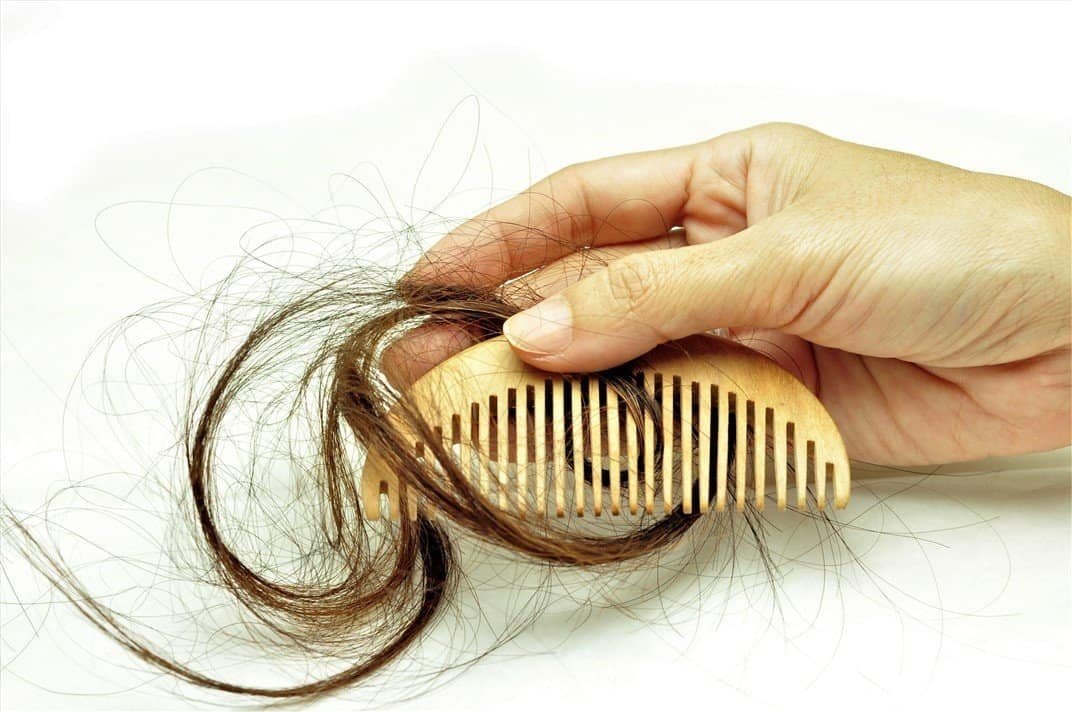You may think you are losing a lot of hair, but you could be wrong.
In this article, you will learn what normal hair loss is and when you should be concerned. Bonus, there are tips for understanding hair loss triggers.
When you comb your hair, you will find some hair falling out, which is completely normal. It is a sign that you have healthy hair on your head.
But, if you’re shedding more than usual, it could mean that all is not well with your hair.
So the question is how much hair loss is normal and how much is excessive? Before answering this question, let’s first see why we lose our hair.
Why do you lose some hair every day?
Hair is already dead when it leaves the scalp. Thus, it may simply remain as long as we live. But that doesn’t happen. As it cannot survive in our lifetime. Daily wear and tear from combing, washing and styling causes hair to split and split. And you can’t fix it, so it needs to be replaced.
It’s like changing the tires on your car.
Depending on how many miles you drive per year, in what weather conditions and even your driving style, your tire can last anywhere from 3 to 10 years. Under optimal driving conditions, the life of the tire will be longer, but in due time, the thread will wear, the tire will break and need to be replaced.
Or you may decide to replace the car, given the constant upgrading of technology these days. But you can’t replace your body, it’s permanent as long as you live.
The good thing is that we don’t have to live with worn out body parts, they are renewed at regular intervals.
The hair on our scalp is replaced every 3 to 6 years. And during this time it goes through various stages.
The hair growth cycle: As they grow, they fall out and grow again

Fortunately, the shortest hairs on our body: eyebrows, eyelashes, hair on arms and legs have a short growth phase of about a month. So they can’t grow much. Whereas the hair on our head has a much longer growth phase that can last six years or more before falling out.
Hair naturally goes through three cycles:
1. Regeneration phase (growth phase): On average we have about 100,000 hairs on our head. From this, about 90 percent of hair strands are in the growing phase. As the name suggests, during the growth phase, hair grows actively, about 1 cm per month. It lasts from 2 to 6 years and determines the length of our hair.
2. Catagen phase (transitional phase): During the catagenesis phase the hair follicle shrinks and the hair stops growing. This takes about two to three weeks. About 1 to 2 percent of your hair is in the catagen phase.
3. The Telogen Phase (resting phase): The last phase is the resting phase which lasts about three to four months. At the end of this phase, the hair falls out. About 10 percent of hair is in the telogen phase at any given time.
Then the hair cycle starts again. A new hair grows from the follicle to replace the old hair. This type of hair loss will not cause a dent in your hairline.
How much hair loss is normal in a day
Losing 50 to 100 hairs each day is considered normal American Academy of Dermatology. However, this number is arbitrary. It varies from person to person, some lose more and some less.
The number 100 shed per day is based on the case that you have 100,000 hairs on your head. Of this, 10 percent is in the telogen phase (resting phase), which is about 10,000 hairs. And since the telogen phase lasts an average of 100 days (2 to 4 months), 10,000 telogen hairs/100 days = 100 hairs shed per day.
So the 100 hair shed per day rule of thumb is a rough estimate to work with. Currently, it applies to both men and women and all ages.
When should you worry about hair loss?
Many times, hair loss is nothing to worry about. Even though you lose hair, you grow it back, so clean hair stays put. If you have longer hair, it may appear that you have lost a lot of hair, while shorter hair may appear to shed less.
That said, an increase in hair loss may occur. You may see a lot of hair in the shower or when you comb your hair, your ponytail has become thinner or your scalp is more visible.
Instead of feeling frustrated, you should approach it with an experimenter’s mind. And ask yourself the following questions and it might help.
Why do I shed a lot of hair?
1. Have you been sick? Did you catch covid as hair loss from covid is quite common in women. But any illness or surgery can cause more hair loss.
2. You have a lot of stress? This is another reason for hair loss. It pushes your hair into telogen phase. Also, stress can increase androgens in the body, leading to male or female pattern baldness.
3. Does your hair loss increase with the change of season?? Also known as seasonal hair loss, some people notice that they lose more hair during the summer or fall or monsoon season. This is due to a change in temperature, which triggers your hair follicles to enter a temporary resting phase.
4. Did you diet and lose weight too quickly? Dieting can lead to malnutrition as you don’t get the necessary vitamins and minerals, leading to poor health. And it affects the hair too.
5. Have you been feeling tired and exhausted lately? Again, you may be deficient in some vitamin: vitamin D, B12, iron, etc.
6. You have started using different hair care products: shampoo, serum, etc.? Certain chemicals in hair products can cause your hair to fall out. It doesn’t matter if the product is natural or not. If your hair is sensitive to it, you will see an increase in shedding.
7. Have you chemically treated your hair lately? Permanent straightening, coloring, etc. can all lead to additional shedding or hair breakage.
What you can do now: 3 steps to reduce hair loss
You can do three things:
1. A stressed mind will cloud your thinking. So keep calm and evaluate the above factors. Because then you can use logic and reason to determine the hair loss trigger.
2. Work with your health care professional to find out what’s going on internally: vitamin deficiency or medical condition?
3. And finally, give it time. Hair loss will correct itself.
Let’s say you had COVID or some other illness, you can expect your hair to fall out after a few weeks. This is because your hair cycle has been interrupted due to illness. But this will calm down and your hair will start growing back.
Also, hair loss due to diet or vitamin deficiency will be corrected when replenished with a healthy diet and vitamin levels.
While you wait for the hair to grow back, you can speed up the recovery process by not overthinking it and doing self-care rituals like going for a walk, meditating, or doing things you enjoy: dancing, playing a sport, etc. Anything that distracts you and rejuvenates you is good for your whole being as well as your hair.
Let’s Summarize:
1. It is completely normal to lose 50 to 100 hairs daily.
2. As part of the hair growth cycle, new hair grows to replace lost hair.
3. The hair growth cycle can be disrupted due to illness, diet, stress. And the result will be excessive hair fall. And new hair growth can take forever to regrow.
4. Some clear signs of excessive hair loss are: visible scalp, thinning ponytail, lots of hair in the shower or when combing.
5. The good news is that hair loss is usually nothing to worry about. Correcting the underlying trigger can help your hair return to its former glory. But occasionally, it can be a sign of a medical condition. So consult your doctor
Losing too much hair? Have you identified your triggers? What steps are you taking? Please share in the comment box below.
